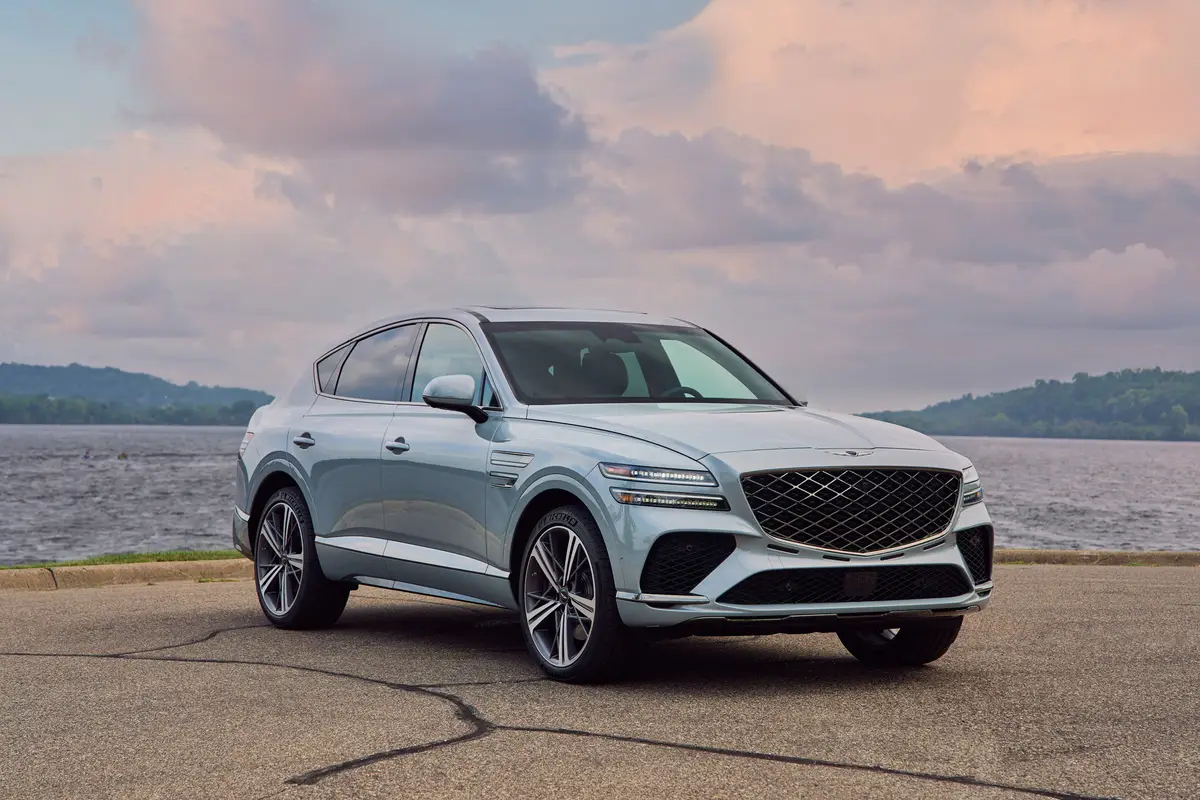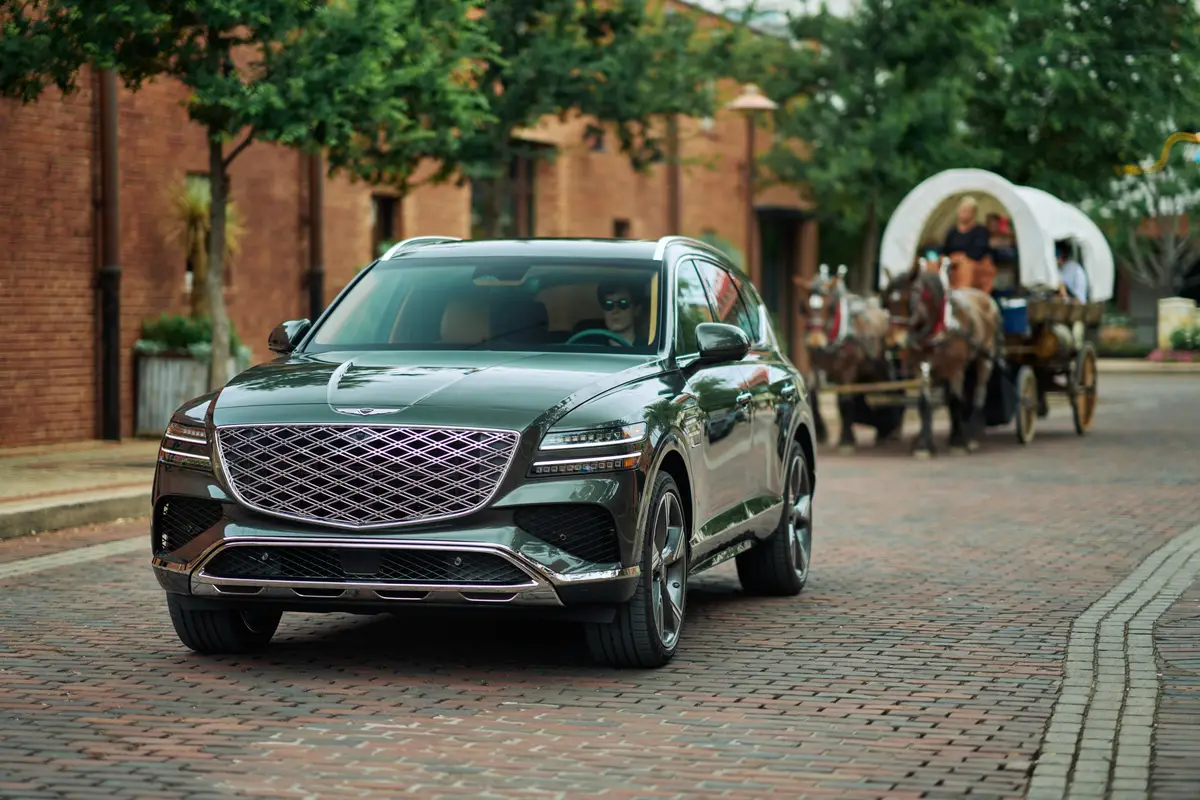Star-Telegram.com's view
The redesigned 2010 Chevrolet Equinox was one of General Motors’ stars during the recent Cash for Clunkers program, with stocks of the vehicle running out during August at dealerships all over the country.
Part of the reason is that the second generation of Chevy compact crossover has great fuel economy for a utility vehicle – the four-cylinder front-wheel-drive model is EPA rated at 22 mpg city/32 highway, which is a 25 percent improvement over the model it replaced, and even better highway mileage than that of the new Ford Escape Hybrid (34 city/31 highway).
But beyond the fuel economy, the new Equinox is a very pleasing vehicle – both in appearance and performance – that should compete quite effectively in a segment that includes the Toyota RAV4, Honda CR-V, Nissan Rogue, Volkswagen Tiguan, Hyundai Tucson, Kia Sportage and more.
The base engine for the Equinox is a 182-horsepower, 2.4-liter, direct fuel-injected four-cylinder that leads the non-hybrid compact-crossover segment in fuel economy. The 2009 Equinox came only with a 185-horsepower V-6 engine, which was rated at 17 city/24 highway.
Highway mileage is aided by the new six-speed automatic transmission, which replaces last year’s four-speed. No manual gearbox is offered.
The Equinox four-cylinder’s 22/32 EPA ratings are better than the 20/27 for the CR-V and 22/28 for the RAV4, the leading models in the segment.
This is the ninth vehicle in the Chevrolet lineup to have highway fuel economy of 30 mpg or above. The highway mileage could give the Equinox a range of up to 600 miles between fill-ups.
Although about two-thirds of buyers are expected to choose the four-cylinder model, there is a new 3.0-liter V-6 engine available in the Equinox as well. Also with direct injection, this engine has 264 horsepower, but has a higher EPA highway rating than the less-powerful V-6 it replaced. With two-wheel drive, mileage is 17 city/25 highway.
There is seating for up to five, two in the comfortable front bucket seats and three on the rear bench, which has quite decent leg- and knee room. As with most rear seats, though, the middle position is best left to the kids. No third row is offered.
The rear seat can be moved forward or rearward nearly eight inches to either increase cargo space or give the rear passengers more legroom. The cargo area has 31.4 cubic feet of space with the rear seat moved all the way forward. The seat has a 60/40 split-fold design that allows for further extension of the cargo compartment.
The Equinox has styling influenced by the current Chevy Malibu sedan and the new Traverse large crossover, especially the front end and grille — which GM calls the new face of Chevrolet.
The two-tier grille features Chevy’s bowtie badge in a gold color in the middle. Also new are wraparound headlights and dual round taillights.
Rocker panels are integrated into the doors to make it easier to enter and exit, a design that prevents getting pants legs soiled by dirt on the rocker panels.
The Equinox is remarkably quiet at highway speeds, thanks in part to the flush-fitting windshield and rear glass, which were designed to help reduce wind noise.
The new Equinox comes in four trim levels: base LS, midlevel 1LT and 2LT, and the top-of-the-line LTZ.
Prices range from $22,440 (plus $745 freight) for the LS model with front-wheel drive to $29,795 for the LTZ model with all-wheel drive. The least-expensive all-wheel-drive model is the LS, for $24,150.
Our tester was the 2LT front-drive model, which has a base price of $25,445 (plus freight). With options, the total sticker on ours was $28,625, but it was quite well equipped, with even such amenities as leather seats. They were part of a $1,050 package that also brought heated front bucket seats.
We also had the chrome appearance package ($695), which tacked on chrome door handles and lower fascia trim, chrome power/heated outside mirrors, luggage-rack side rails with chrome inserts, and ultrasonic rear parking assist.
Also on our car was the optional power rear liftgate ($495) and black-granite-metallic exterior paint ($195).
The V-6 engine is a $1,500 upgrade that is offered on the LT and LTZ models only. But the four-cylinder engine is available in all trim levels, even the fanciest model. Consumers are demanding this, still remembering $4-a-gallon gasoline.
Among standard safety features are the OnStar communications system (with automatic accident reporting), front seat-mounted side air bags, roof-mounted side-curtain air bags in both rows, electronic stability and traction control, and four-wheel anti-lock disc brakes.
A rearview camera system was included in the base price of our tester, a great safety feature that probably saved me from running over the two-foot-tall toddler of some oblivious parents who went walking ahead of their child – and never looked back – in a busy parking lot where I was about to back out of a space.
This child was not visible to me in any of the mirrors of the car, nor by looking out the windows; I only knew the child was there because I saw him on the rearview-camera screen, which activated when I put the vehicle’s transmission into reverse. The parents were 20 feet away and not even looking back toward their child, who had stopped to pick up something off the ground right behind me.
Parents: Hold your children’s hands as you cross streets or parking lots. And automakers: Let’s get these back-up cameras in every car you make. In cars without a navigation system, the camera’s view is displayed in a portion of the rearview mirror, where the careful driver is going to look before backing anyway; in those with nav systems, the image is on the navigation screen.
XM satellite radio is standard on all Equinox models. Optional is a system that enables the car to be started using the remote-control key fob so its interior can be warmed up or cooled down before the passengers get in.
While the 2010 Equinox carries over the 112.5-inch wheelbase of the ’09 model, it’s an inch shorter overall, but an inch wider. It also has a wider front track to improve ride and handling.
Handling was more sedan-like than one would expect from a roomy SUV, thanks to the car-based chassis that the Equinox rides on. Steering was not as tight as that of a sport coupe, but certainly more crisp than I would have expected in a vehicle that GM markets as a truck.
Our four-cylinder engine had plenty of power for everyday driving, although the V-6 would have added some extra zip for passing on two-lane country roads and for merging onto freeways on uphill ramps. Still, I had no real complaints, even with four people in the car.
A GMC version of this vehicle, the Terrain, arrives this fall to replace the 2009 Pontiac Torrent. GM will discontinue the Pontiac brand next year, but wanted to keep the compact crossover for the GMC dealers. Most Pontiac dealerships also carry GMC and Buick products.
Saturn also sells a compact SUV, the Vue, based on the same architecture as the Equinox. It was redesigned for 2008, and has the same engines that will be offered in the new Equinox. But GM plans to spin off the Saturn brand, and the Vue is now scheduled to go out of production after 2011.
The redesigned Equinox interior includes lots of storage areas, including an oversized glove box, a bin above the center stack in instrument panel, and a closed bin under the front center armrest that is big enough for a laptop computer, allowing it to be hidden from view for security while the vehicle is parked.
A new floating center instrument-panel stack holds controls for the climate-control and audio systems.
Among standard features on the 2LT model are 17-inch aluminum wheels; power windows/mirrors/door locks; remote keyless entry with the remote-start system; automatic climate control; deep-tinted glass; fog lights; premium cloth seats; eight-way power driver’s seat with lumbar support; cruise control; Pioneer premium AM/FM/compact-disc stereo with auxiliary input and eight speakers, as well as a USB port and auxiliary input jack; compass; self-dimming rearview mirror; Bluetooth phone connection; and a leather-wrapped steering wheel with audio controls.
Other options include a rear DVD entertainment system (with two independent screens – one can show a movie, the other can be used for gaming) and an in-dash GPS navigation system.
Electric power steering is standard, and available wheel sizes include 17-, 18- and 19-inch.
The automotive columns of G. Chambers Williams III have appeared regularly in the Star-Telegram since 1994. Contact him at 210-250-3236; chambers@star-telegram.com.
The package: Compact, five-passenger, four-door, front- or all-wheel-drive, four-cylinder or V-6 powered crossover utility vehicle.
Highlights: Chevy’s compact crossover enters its second generation for 2010. It has been extensively redesigned, both inside and out, and offers a choice of two new engines.
Negatives: No third row of seating offered for increased capacity; no manual gearbox available.
Engine: 2.4-liter inline four-cylinder; 3.0-liter V-6.
Transmission: Six-speed automatic.
Power/torque: 182 HP./174 foot-pounds (I-4); 264 HP./222 foot-pounds (3.0 V-6).
Brakes, front/rear: Disc/disc, antilock.
Length: 187.8 inches.
Curb weight: 3,770 pounds.
Cargo volume: 31.4 cubic feet (behind rear seat).
Towing capacity: 1,500 pounds (I-4); 3,500 pounds (V-6).
EPA fuel economy: 22 mpg city/32 highway (I-4, 2WD); 20/29 (I-4, 4WD); 17/25 (V-6, 2WD); 17/24 (V-6, 4WD).
Fuel capacity/type: 18 gallons, regular unleaded.
Base price range: $22,440-$29,795 plus $745 freight.
Price as tested: $28,625 (2LT, I-4, 2WD, including freight and options).
Major competitors: Hyundai Tucson, Kia Sorento, Ford Escape/Mercury Mariner/Mazda Tribute, Toyota RAV4, Jeep Liberty, Honda CR-V, Suzuki Grand Vitara, GMC Terrain, Saturn Vue, Kia Sportage, Mitsubishi Outlander, Subaru Outback.
On the Road rating: 8.7 (of a possible 10).
Prices shown are manufacturer’s suggested retail; actual selling price may vary.
Latest news



